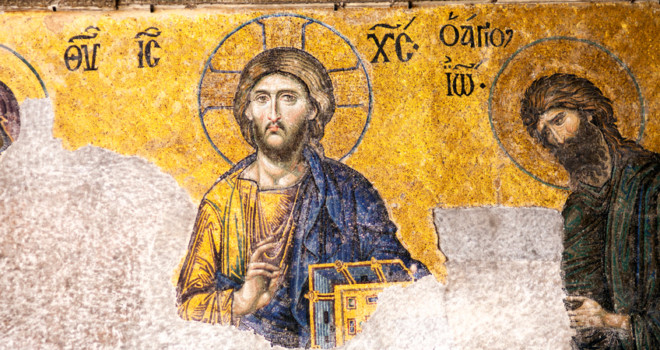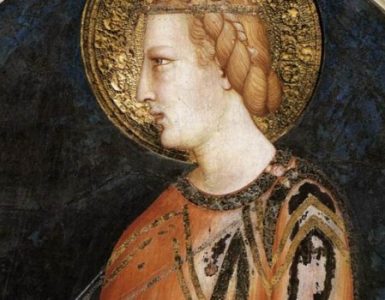It is not enough to say that St. John of the Cross proposes Christ to us as master and model. It should be said that he presents Him as “beloved” master and as “loved” model, to whom, since we love Him, we wish to conform ourselves; and, as He has conquered our heart, we wish to embrace His teachings.
The first preoccupation of the saint is to install Jesus in our hearts. He has recourse to the lever of the love of Jesus, to move the soul to enter with energy on the way of abnegation, which should lead it progressively to union with God.
The first task consists in becoming masters of the sensibility that urges us toward earthly satisfactions. The soul prepares to work with the firm decision to control the use of its senses and to discipline its passions. The exercises proposed by the saint require energy, but the soul, agreeing to them, has proved itself to be truly seeking the Lord. He (the Lord) has also come to seek it and does so with the crisis of aridity, by means of which the soul has succeeded in rendering its interior life less dependent on sensibility, and therefore it becomes more solidly spiritual.
Thus placed in the “way of the spirit,” the soul has tried to draw near to the Lord by means of an intense exercise of the theological virtues, which truly introduced it to a continual and rather intimate relationship with God. Its “active” search for the Lord was in this way intensified; therefore, it is to be expected that the Lord also will come again to look for it.
The Way of Union with God
The way of union has two preparation periods: the purification of the senses and the purification of the spirit; and in both there is an active and a passive phase. In order that the soul may courageously undertake the first phase of its way, the saint appeals to the soul’s love for Jesus. Then, to avoid its retreating in fear before the suffering of the second — namely, of the purification of the spirit — he will remind it of the annihilation that its beloved Jesus reached.
From the first steps on the way of union, the saint proposed to the soul a program of energetic renunciation, precisely so that it would not lose time in useless wanderings and could thus soon reach the end. It is a matter of a continual war against our natural inclinations. Where will the soul go to look for the courage to prepare itself for such an undertaking? Only in the love of its spouse, Jesus! Let us listen to the saint:
To conquer all the desires and renounce pleasure in everything . . . with the love of which the will is wont to be inflamed . . . it must have another, more living flame, a higher love, which is precisely the love of its spouse, so that the latter, replacing in it the soul’s own pleasure and strength, the soul may be reclothed with courage and constancy to crush easily every other love.
In order to conquer the strength of the sensitive appetites, then, just any love for its spouse is not enough, but it should also be inflamed with keen desires and loving impulses.
Love of Jesus
Nothing is done without the love of Jesus. For that reason, the soul’s first preoccupation should be to procure this love with prayer, meditation, pious reading, and sacrifice. The grace of God will not be lacking. Yet obviously, when the soul loves Jesus, it gladly takes Him as master, and here the saint expounds how Jesus teaches with doctrine and with example to enter on the way of renunciation.
The doctrine of our saint is evangelical. If it were not, it would truly not merit our confidence, because, in the spiritual life, there is only one master: Christ Jesus. All others apply His doctrine only to particular conditions of time, state, vocation, and so forth, but the substance given is always from the doctrine of Jesus. The doctrine of St. John of the Cross on total spoliation would not, therefore, merit our adhesion were it not contained in the holy Gospel. But there is nothing to fear, since we find it there in a more formal manner.
“If any man would come after me,” Jesus teaches, “let him deny himself and take up his cross and follow me” (Matt. 16:24).
Follow
where? Even to annihilation, even to nothingness.
“For whoever would save his life will lose it, and whoever loses his life for my sake will find it” (Matt. 16:25).
Jesus says: “How narrow is the way that leads to life.”
Yes, “the gate is narrow . . . that leads to life,” and alas “those who find it are few” (Matt. 7:14). For that reason, Jesus wished to add example to words, and good teachers do as He did.
Model of the Soul
St. John of the Cross saw in Jesus the model of the soul, as much in the purification of the senses as in that of the spirit — that is, in both periods of the spiritual way. As for mortification of the senses, it is certain that He died with regard to the life of the senses — spiritually during His whole life and materially at the hour of His death. In life, as He said, “He had nowhere to lay His head, and much less in death” (Ascent II, VII, 8). Remembering most tenderly the painful torture of the head of Jesus on the Cross, who will not then have the strength to impose on himself some sacrifice for love of Him?
The saint continues, alluding to the second
part of the journey, certainly more painful than the first. Here he draws a
touching picture of the total annihilation of Christ at the hour of His death:
In reference to the spirit, it is certain that, in His last moments He was annihilated in soul, being left by the Father without any consolation or comfort . . . so much so that on the Cross He exclaimed in that sorrowful lament: “My God, my God, why have You forsaken me?” (Matt. 27:46). The loving Lord was vilified and humiliated in everything: as regards the reputation of men, since, seeing Him die on the trunk of a tree, . . . they mocked Him; as regards nature, since, in it, He was annihilated, dying; and concerning the spiritual comfort of the Father, who, in those moments, abandoned Him so that He might pay the debt of human sins and unite man to God. (Ascent II, VII, 8)
Let us not forget that Jesus endured all that and
suffered for us! “For love of us and for our salvation He came down from heaven
. . . and was crucified, suffered, died, and was buried” (from the Creed).
Yes,
Jesus gave us the example of total annihilation, but He also made us understand
that this annihilation should bear fruit.
Indeed, He then wrought a greater work than He would have done in life with miracles and striking prodigies: the work with which He reconciled and united mankind with God by means of grace. (Ascent II, VII, 8)
And this aspect of Jesus’ annihilation also teaches us:
From this the spiritual man understands the mystery of the life of Christ in order to be united with God and knows that the more one is annihilated for His love, according to the two parts, sensitive and spiritual, so much the more is one united to Him and so much the greater is the work accomplished. (Ascent II, VII, 8)
Placed in the crucible of the night of the
spirit, the soul will find comfort not only in the example of the sufferings of
Jesus, embraced for our love, but also in the remembrance of their
fruitfulness; and such fecundity will never be lacking — the saint definitely
affirms this — to the sufferings of the soul.
Concentrating our attention on the teaching and example of Jesus, St. John of the Cross has prepared us to face with greater courage the inevitable trials of the spiritual way. The help that we are to receive from Jesus is not limited to this; He also has to communicate to us the grace that makes us live the supernatural life and, conforming us to Him, finally makes us reach union with God. The saint inculcates this truth, presenting Jesus to us as the spouse of the soul.
✠
This article is from a chapter in Fr. Gabriel Of St. Mary Magdalen’s Union With God According to St. John of the Cross. It is available from Sophia Institute Press.













